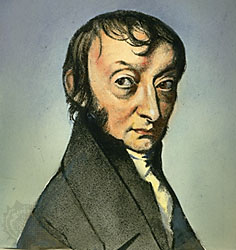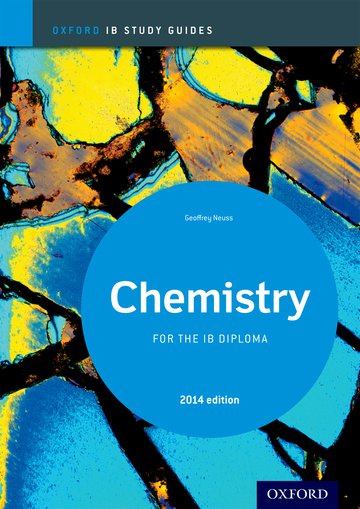The mole & Avogadro's constant

 1.2 The mole concept (5 hours)
1.2 The mole concept (5 hours)
Pause for thought
 Although Avogadro’s number is probably the best known number in chemistry, Avogadro himself knew nothing about its value or the concept of the mole. Avogadro, or to give him his full title, Lorenzo Romano Amedeo Carlo Avogadro, conte di Quaregna e di Cerreto was a lawyer with an interest in philosophy. He was born in Turin in 1776 and around the turn of the nineteenth century began private studies in science. This was the same time as John Dalton was proposing his atomic theory. Avogadro worked on gases and showed that the ratios of volumes of reacting gases were simple numbers. In 1811 he published a paper in Journal de physique in which he stated that the particles of simple substances such as hydrogen, oxygen and nitrogen were composed not just of atoms (as Dalton claimed) but of atoms combined together in molecules. He reasoned correctly that one molecule of oxygen combines with two molecules of hydrogen to form two molecules of water. He went on to propose what is now known as Avogadro’s Hypothesis: equal volumes of different gases (under the same conditions) contain the same number of molecules. Because he was relatively unknown Avogadro’s work was ignored for almost fifty years until in 1860 (four years after Avogadro’s death) Stanislao Cannizarro explained its importance, particularly how it could be used to determine atomic and molecular masses.
Although Avogadro’s number is probably the best known number in chemistry, Avogadro himself knew nothing about its value or the concept of the mole. Avogadro, or to give him his full title, Lorenzo Romano Amedeo Carlo Avogadro, conte di Quaregna e di Cerreto was a lawyer with an interest in philosophy. He was born in Turin in 1776 and around the turn of the nineteenth century began private studies in science. This was the same time as John Dalton was proposing his atomic theory. Avogadro worked on gases and showed that the ratios of volumes of reacting gases were simple numbers. In 1811 he published a paper in Journal de physique in which he stated that the particles of simple substances such as hydrogen, oxygen and nitrogen were composed not just of atoms (as Dalton claimed) but of atoms combined together in molecules. He reasoned correctly that one molecule of oxygen combines with two molecules of hydrogen to form two molecules of water. He went on to propose what is now known as Avogadro’s Hypothesis: equal volumes of different gases (under the same conditions) contain the same number of molecules. Because he was relatively unknown Avogadro’s work was ignored for almost fifty years until in 1860 (four years after Avogadro’s death) Stanislao Cannizarro explained its importance, particularly how it could be used to determine atomic and molecular masses.
Nature of Science
The concept of the mole developed from the concept of ‘equivalent mass’. The equivalent mass of an element was the mass required to react with one gram of hydrogen. Dalton’s idea of atoms could not account for the fact that 8 g of oxygen combines with 1 g of hydrogen to form 9 g of water whereas from Avogadro's and Gay-Lussac’s experiments, two volumes of hydrogen gas combine with one volume of oxygen to produce two volumes of water. Avogadro’s hypothesis is an example of a paradigm shift to explain this in terms of molecules.
Learning outcomesAfter studying this topic students should be able to: Understand:
Apply their knowledge to:
| Clarification notesAvogadro’s constant (L or NA) has the value 6.02 x 1023 mol-1. This value is given in Section 2 of the IB data booklet. The value will be given for multiple choice questions that require it in Paper 1. The unit g mol-1 is a derived SI unit International-mindednessThe SI system (Système International d’Unités) refers to the metric system of measurement. It is based on seven base units: metre (m) for length, kilogram (kg) for mass, seconds (s) for time, ampere (A) for current, kelvin (K) for absolute temperature, mole (mol) for amount of substance, and candela (cd) for luminous intensity. |
Teaching tipsThere is perhaps an irony in that one of the concepts in chemistry that many students find the most difficult to grasp appears in the very first topic. If a student does not truly understand the idea of a mole then much of chemistry will continue to be a mystery to them. Before I teach about moles I first cover what an atom is (Topic 2.1) so that students at least have an idea of how small atoms are and the fundamental sub-atomic particles they are composed of. They should then be in a position to see that 1 g of hydrogen atoms will contain a very large number of hydrogen atoms and that since a helium atom has a mass four times as great then you would need 4 g of helium to contain the same number of helium atoms as there are hydrogen atoms in 1 g of hydrogen atoms. From this you can develop the idea of a mole. For some students comparing a mole with other types of grouping (pairs, dozens, scores, lakhs etc.) can also be useful. The exercise to get them to 'guesstimate' how many grains of sand there are on a beach is also worth doing and I've included my PowerPoint on this below. I am actually convinced that not even an experienced chemist can truly envisage one mole of particles - the number is outside our everyday comprehension (see my blog on 'a mole of information'). I have also made up a page illustrating this, Comprehending Avogadro's constant, which I have put on the 'Complete course for students' section of the site so that you can encourage your students to look at as they have direct access to it. Give them the examples on the attached page and get them to learn from their mistakes. However even with much practice a few students may just 'not get it' (see the educational background in Topic 1). I find that it is best to move on (rather than dwell on it and give them even more examples) as otherwise they quickly become disillusioned with chemistry. Hopefully, as their brain develops during the two year course, the constant drip feed of quantitative work will eventually mean that they will be able to grasp the mole concept before the end of the course. Impress upon your students that chemists now use the word 'amount' for what was previously 'the number of moles of''. You will need to use experimental data from mass changes to work out an empirical formula. One of the best hands-on ways of doing this is to burn magnesium in air. This experiment will cover the mandatory laboratory component listed in this topic. | Study guide
Page 2 QuestionsFor ten 'quiz' multiple choice questions with the answers explained see MC test: The mole concept. For short-answer questions which can be set as an assignment for a test, homework or given for self study together with model answers see Empirical & molecular formula questions. For a different set of short-answer questions which can be set as an assignment for a test, homework or given for self study together with model answers see The mole & Avogadro's constant questions. Vocabulary listMole (mol) IM, TOK, utilization etc.See separate page which covers all of Topic 1 Practical work
|
Teaching slides
Teachers may wish to share these slides with students for learning or for reviewing key concepts.
Other resources
1. A PowerPoint which gets students to guesstimate the number of grains of sand on a beach and relates this to one mole.
2. See the separate page on this site, Comprehending Avogadro's constant (students who are signed up to student access have direct access to this), which may also help them to grasp the true size of Avogadro's number.
3. A video by Mad Penguin Films that attempts to illustrate how big a mole is - put to music.

 IB Docs (2) Team
IB Docs (2) Team 




















